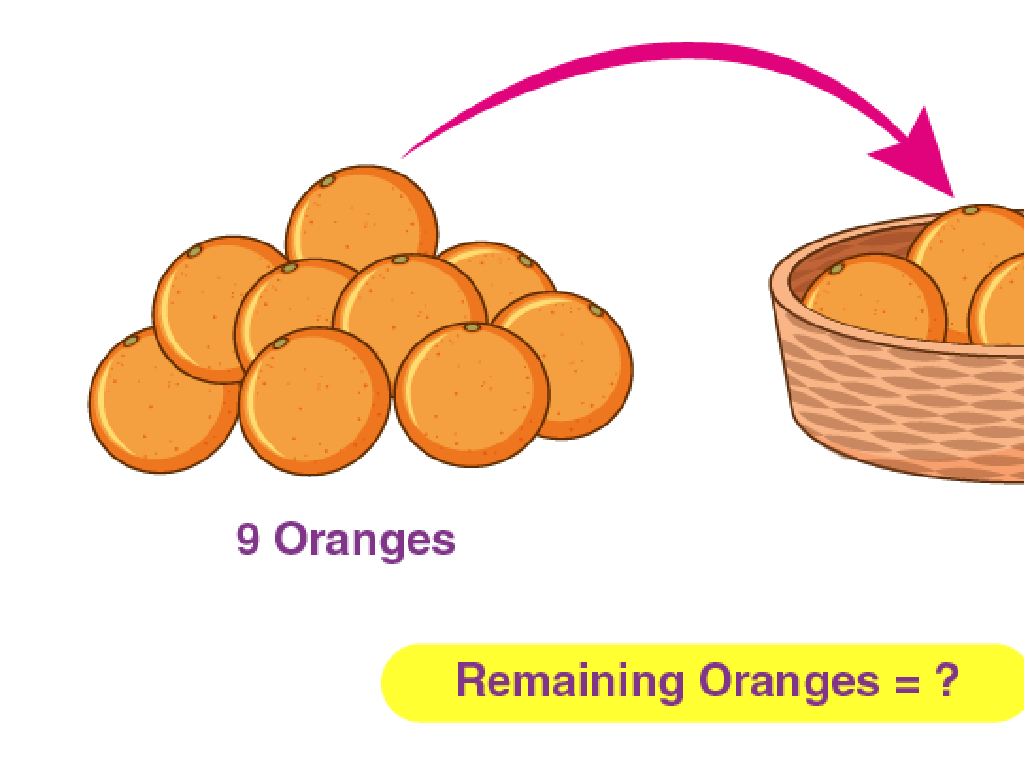Organization In The Human Body: The Heart And The Circulatory System
Subject: Science
Grade: Eighth grade
Topic: Anatomy And Physiology
Please LOG IN to download the presentation. Access is available to registered users only.
View More Content
Welcome to Anatomy: The Heart & Circulatory System
– Explore Anatomy and Physiology
– Significance of the circulatory system
– Delivers oxygen/nutrients, removes waste
– The heart: Our focus today
– Central organ of the circulatory system
– Preview of heart functions
– Pumps blood, maintains blood pressure
|
This slide introduces students to the field of Anatomy and Physiology, with a focus on the circulatory system and the heart. It’s crucial to convey the importance of the circulatory system in transporting oxygen and nutrients to body cells and removing waste products. The heart, as the central organ of this system, is responsible for pumping blood throughout the body and maintaining blood pressure. Use this slide to set the stage for a deeper dive into the structure and function of the heart, including its role in the overall health and functioning of the human body. Encourage students to think about how the heart and circulatory system are interconnected with other body systems.
The Circulatory System Explained
– Definition of circulatory system
– A network that facilitates blood flow and transport of substances throughout the body.
– Key components: heart, blood, vessels
– The heart pumps blood, which travels through blood vessels, carrying essential elements.
– Delivers oxygen and nutrients
– Blood carries oxygen and nutrients to cells, vital for energy and growth.
– Removes waste from the body
– Blood also picks up waste products from cells for detoxification and removal.
|
This slide introduces the circulatory system, a complex network that sustains life by working as the body’s delivery and waste removal system. The heart acts as a pump, blood as the transport medium, and blood vessels as the pathways. Emphasize the importance of the circulatory system in providing oxygen and nutrients to every cell and removing carbon dioxide and other waste products. Discuss how this system is essential for maintaining homeostasis and supporting the body’s functions. Use diagrams to illustrate the system’s components and flow of blood. Encourage students to think about how lifestyle choices can impact the circulatory system’s health.
The Heart: Our Lifeline
– Heart anatomy: chambers and valves
– The heart has four chambers and valves that control blood flow.
– Heart’s role in blood circulation
– It acts as a pump to move blood through the body’s network of vessels.
– Understanding the ‘Lub-Dub’ sound
– ‘Lub-Dub’ is the sound made by the closing of heart valves.
– Significance of heart sounds
|
This slide introduces students to the heart’s structure and function. Begin by explaining the heart’s anatomy, including its four chambers (the two atria and two ventricles) and the valves that ensure blood flows in the right direction. Discuss how the heart works as a pump to circulate blood, delivering oxygen and nutrients to the body and removing waste products. The ‘Lub-Dub’ sound is a key focus, which is caused by the closing of the valves: ‘lub’ is the sound of the mitral and tricuspid valves closing, while ‘dub’ is the sound of the aortic and pulmonary valves closing. Emphasize the importance of these sounds as indicators of heart health. Engage students by asking if they’ve ever heard a heartbeat and what they think it signifies.
Journey of a Red Blood Cell
– Tracking a red blood cell’s path
– Follow the cell as it travels through the heart’s chambers
– Differentiating systemic & pulmonary circulation
– Systemic circulates blood throughout body, pulmonary between heart and lungs
– Exploring oxygen exchange in lungs
– Oxygen is picked up in the lungs and carbon dioxide is released
– Significance of the circulatory system
|
This slide aims to illustrate the path taken by a red blood cell as it moves through the circulatory system, highlighting the heart’s pivotal role. Students will learn the difference between systemic circulation, which delivers blood to the entire body, and pulmonary circulation, which is the exchange route between the heart and lungs. Emphasize the importance of oxygen exchange in the lungs, where red blood cells pick up oxygen and release carbon dioxide. The circulatory system’s efficiency is crucial for maintaining the body’s homeostasis and ensuring that all tissues receive the oxygen and nutrients they need. Use diagrams to help visualize the process, and consider incorporating an interactive element where students can trace the path of a red blood cell on a handout or through a digital simulation.
Keeping the Heart Healthy
– Factors affecting heart health
– Genetics, lifestyle, stress levels, and age can all impact heart health.
– Diet and exercise benefits
– Balanced diets and regular exercise strengthen the heart and improve circulation.
– Risks of harmful habits
– Smoking and excessive alcohol consumption can damage heart function.
– Strategies for a healthy heart
– Regular check-ups, staying active, and eating well promote heart health.
|
This slide aims to educate students on the importance of maintaining a healthy heart through various lifestyle choices. Discuss how genetics and age can predispose someone to heart issues, but lifestyle factors like diet and exercise play a significant role in prevention. Emphasize the benefits of a balanced diet rich in fruits, vegetables, and whole grains, and regular cardiovascular exercise. Highlight the dangers of smoking and excessive alcohol consumption on heart health. Encourage students to adopt healthy habits early on and to think critically about their daily choices. Provide examples of healthy habits, such as choosing water over soda, taking stairs instead of the elevator, and participating in sports or other physical activities.
Class Activity: Model the Heart
– Craft a heart model with materials
– Show heart pumping using balloons
– Balloons represent chambers, tubes for vessels
– Engage in a group discussion
– Reflect on the learning experience
– Share insights on the heart’s function
|
This hands-on activity is designed to help students understand the structure and function of the heart within the circulatory system. Provide a variety of craft materials such as clay, pipe cleaners, and construction paper for students to construct a simple heart model. Use balloons to represent the heart’s chambers and tubes to mimic blood vessels, demonstrating how the heart pumps blood throughout the body. After the activity, facilitate a group discussion allowing students to share what they learned and ask questions. Possible variations of the activity could include using different materials to represent other aspects of the heart, such as valves or different types of blood vessels. The goal is for students to engage with the material in a tactile way and to foster a deeper understanding of cardiovascular physiology.
Quiz Time: The Heart and Circulatory System
– Review key circulatory concepts
– Engage in an interactive quiz
– Test your knowledge on heart anatomy and blood flow
– Receive immediate feedback
– Understand your learning progress
– Clarify any doubts on the spot
– Ask questions to resolve misunderstandings
|
This slide is designed to reinforce the students’ understanding of the circulatory system through an interactive quiz. Begin with a quick review of the heart’s structure, its functions, and the circulatory system’s role in the human body. The quiz should include a variety of question types, such as multiple-choice, true/false, and short answer, to test different aspects of their knowledge. Provide immediate feedback on their answers to help them learn from their mistakes. Encourage students to ask questions if they are unsure about a concept, providing an opportunity for clarification and deeper understanding. This activity will help gauge the students’ grasp of the material and promote active learning.
Wrapping Up: Heart & Circulatory System
– Recap heart/circulatory system
– Homework: report on heart disease
– Choose a heart disease, research, and summarize findings on one page
– Encourage class questions
– Feel free to ask questions for better understanding
– Suggest further reading
– Explore more about how the heart works in different conditions
|
As we conclude today’s lesson, ensure students have a solid understanding of the heart and circulatory system’s function and importance. For homework, students will deepen their knowledge by researching a specific heart disease and preparing a one-page report. This task will enhance their research skills and understanding of how diseases can affect the heart. Encourage students to ask questions if they need clarification on any part of the lesson, and suggest books or resources for those interested in learning more. This will help foster a curious mindset and a deeper appreciation for human anatomy.


-a-solution-to-the-nonlinear-equation/nonlinear_graphs_examples.png)



